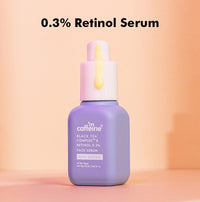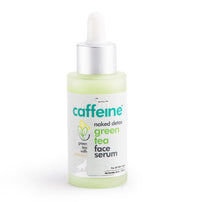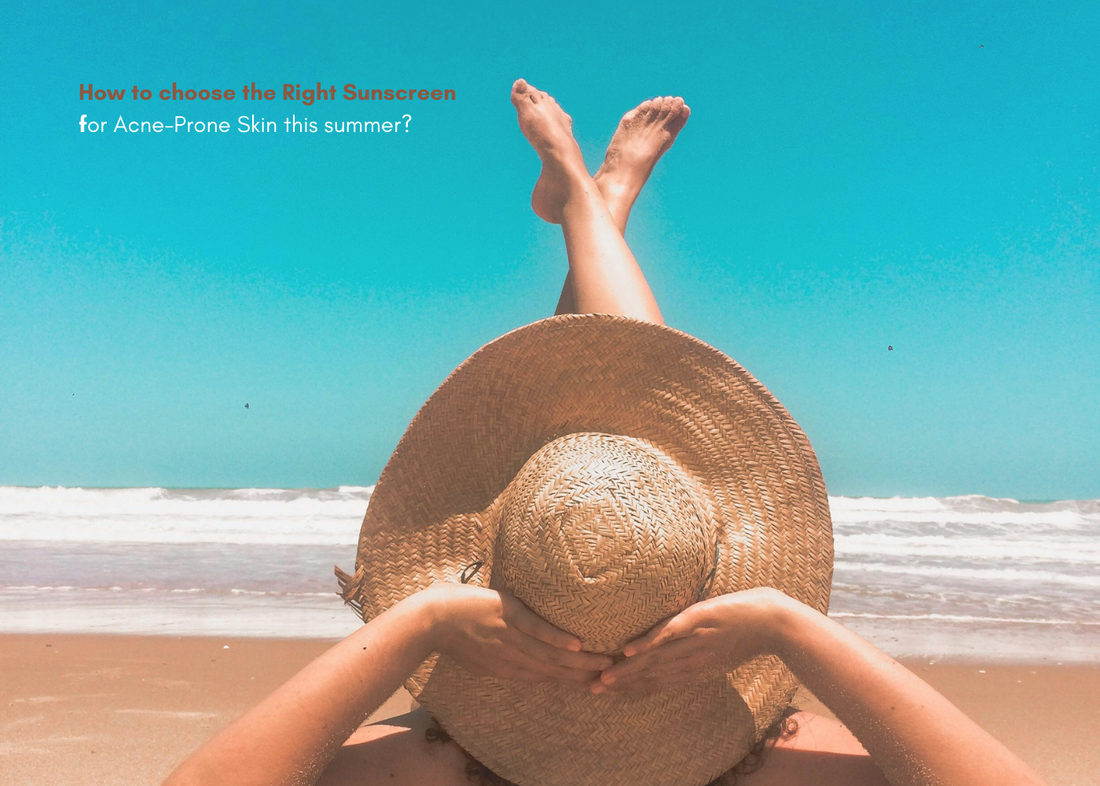Why Specialized Sunscreens Matter for Acne-Prone Skin
Using regular sunscreen on acne-prone skin often feels like choosing between two evils: protect your skin from UV damage or deal with new breakouts. This frustrating dilemma occurs because standard sunscreens typically contain pore-clogging ingredients that trap bacteria, sebum, and dead skin cells—the perfect recipe for acne flare-ups.
For acne sufferers, sun protection becomes even more critical, not less. UV exposure directly worsens existing acne in multiple ways:
-
Accelerates post-inflammatory hyperpigmentation (those stubborn dark spots)
-
Increases inflammation in already irritated skin
-
Damages skin cells, slowing healing of existing breakouts
-
Stimulates sebum production, potentially triggering more acne
The risk multiplies for anyone using common acne treatments like retinoids, benzoyl peroxide, salicylic acid, or prescription medications. These increase photosensitivity, making sun-exposed skin more vulnerable to damage and irritation.
Specialized sunscreens formulated specifically for acne-prone skin solve this problem by providing essential UV protection without the comedogenic ingredients. These formulations balance effective sun protection with non-pore-clogging textures that allow skin to breathe.
Key Ingredients to Look For in Acne-Safe Sunscreens
When scanning sunscreen labels, prioritize these ingredients that protect without aggravating acne:
-
Non-comedogenic base ingredients: These formulations undergo testing to ensure they don't clog pores or trigger new breakouts.
-
Zinc oxide: This mineral sunscreen ingredient provides broad-spectrum protection while simultaneously calming inflammation and reducing bacterial activity on the skin.
-
Niacinamide: A form of vitamin B3 that regulates oil production, strengthens the skin barrier, and reduces inflammation—making it ideal for supporting acne-prone skin.
-
Hyaluronic acid: Provides lightweight hydration without adding oil, keeping skin balanced without triggering breakouts. The Kombucha Hydra Repair Sunscreen contains this ingredient to maintain skin moisture without heaviness.
-
Green tea extract: Contains powerful antioxidants called catechins that fight free radicals while reducing inflammation. The Green Tea Sunscreen harnesses these properties.
-
Caffeine: Functions as an antioxidant with anti-inflammatory properties that help soothe irritated skin. Research indicates caffeine may enhance UV protection when included in sunscreen formulations.
-
Silica: Absorbs excess oil throughout the day, preventing the shiny appearance that often troubles acne-prone skin.
-
Ceramides: Help repair and strengthen the skin barrier, which is often compromised in acne-prone skin, without causing breakouts.
-
Salicylic acid: Some advanced formulations include low concentrations of this beta-hydroxy acid to provide continuous pore-clearing benefits throughout the day.
Ingredients That Trigger Breakouts: What to Avoid
Certain sunscreen ingredients consistently trigger breakouts in acne-prone skin. Avoid formulations containing:
Heavy oils: Coconut oil, mineral oil, and other occlusive oils quickly clog pores and create an environment where acne bacteria thrive.
Fragrances: Artificial scents often irritate sensitive, acne-prone skin, triggering inflammation that worsens existing breakouts.
Comedogenic filters: Certain chemical sunscreen ingredients like oxybenzone and octinoxate can irritate sensitive skin and potentially disrupt hormonal balance.
Isopropyl myristate and isopropyl palmitate: These emollients give sunscreen a smooth texture but rank highly on the comedogenicity scale.
Denatured alcohols: While creating an initially lightweight feel, these alcohols (SD alcohol, alcohol denat) disrupt the skin barrier and trigger increased oil production as the skin attempts to compensate.
Heavy silicones: Ingredients ending in "-cone" (like dimethicone) can form an occlusive barrier that traps bacteria and sebum, potentially worsening acne in some skin types.
Petrolatum and mineral oil: While excellent for dry skin, these petroleum derivatives commonly clog pores in acne-prone skin.
mCaffeine sunscreen formulations exclude these problematic ingredients to support clear skin while maintaining effective sun protection.
Physical vs. Chemical Sunscreens for Acne-Prone Skin
Understanding the fundamental differences between physical and chemical sun protection helps identify which might work better for your specific acne concerns.
Physical (Mineral) Sunscreens
Physical sunscreens create a protective barrier on the skin's surface that reflects and scatters UV radiation. They rely primarily on zinc oxide and/or titanium dioxide.
Benefits for acne-prone skin:
-
Less likely to cause irritation or allergic reactions
-
Zinc oxide offers inherent anti-inflammatory benefits that can calm acne
-
Start working immediately upon application
-
Generally better tolerated by sensitive, reactive skin
-
Won't clog pores when properly formulated
Considerations:
-
Traditional formulations may leave a white cast (newer micronized versions minimize this)
-
Can sometimes feel heavier on the skin
-
May require more frequent reapplication when sweating or swimming
-
Sometimes more difficult to blend evenly
Chemical Sunscreens
Chemical sunscreens absorb UV radiation and convert it to heat through a chemical reaction. They typically contain ingredients like avobenzone, octinoxate, octisalate, and octocrylene.
Benefits for acne-prone skin:
-
Usually lighter, more fluid textures that spread easily
-
No white cast issues
-
Often more water-resistant
-
Can feel less "heavy" on oily skin
Considerations:
-
Higher potential to irritate sensitive skin
-
Some chemical filters increase the risk of breakouts
-
Require 15-20 minutes to activate before sun exposure
-
Several chemical UV filters raise environmental concerns
Hybrid formulations that combine mineral and chemical filters often provide the best of both worlds for acne-prone skin—the gentleness of minerals with the elegant texture of chemical filters. The Sun Fix Ultra Light Matcha Tea Sunscreen offers this balanced approach.
How to Choose the Right SPF Level for Your Needs
SPF (Sun Protection Factor) measures how effectively a sunscreen protects against UVB rays—the ones responsible for sunburn and contributing to skin cancer. Understanding SPF numbers helps select appropriate protection:
SPF 30: Blocks approximately 97% of UVB rays SPF 50: Blocks approximately 98% of UVB rays SPF 50+: Blocks approximately 98.5% of UVB rays
For acne-prone skin, dermatologists typically recommend at minimum SPF 30 for daily use and SPF 50+ for extended outdoor activities. Higher SPF becomes particularly important for those using acne treatments that increase photosensitivity.
-
Beyond the SPF number, look for these critical indicators:
-
Broad-spectrum protection: Ensures defense against both UVA rays (which cause premature aging and penetrate deeper) and UVB rays (which cause burning).
-
PA rating: The PA system (+, ++, +++, ++++) indicates the level of UVA protection, with more plus symbols signifying stronger protection against these aging rays.
-
Water resistance: Important for outdoor activities or humid climates where sweating occurs, but be aware that water-resistant formulations sometimes contain heavier ingredients.
The Sun Fix Hydra Dew Ultralight Sun Fluid offers SPF 50+ PA++++ protection, providing comprehensive defense against both UVA and UVB rays without compromising the skin's clarity.
Proper Sunscreen Application Techniques for Acne-Prone Skin
Even the most carefully selected sunscreen fails without proper application. Follow these specialized techniques for acne-prone skin:
-
Clean canvas: Always apply sunscreen to freshly cleansed skin to prevent trapping dirt, excess oil, and bacteria underneath.
-
Proper amount: For facial application, use approximately 1/4 teaspoon (about a nickel-sized dollop). Most people apply less than half the necessary amount, significantly reducing protection.
-
Application method: Instead of rubbing vigorously (which can irritate acne), dot sunscreen evenly across your face, then gently pat and press it into the skin.
-
Coverage: Pay special attention to commonly missed areas that are vulnerable to sun damage—hairline, around the eyes, ears, neck, and lips.
-
Layering time: Allow sunscreen to set for 15-20 minutes before applying makeup to ensure proper film formation.
-
Reapplication strategy: Refresh sunscreen every two hours of sun exposure, or immediately after swimming or heavy sweating. For mid-day reapplication over makeup, consider a sunscreen stick like the Hydrating Kombucha Tea Sunscreen Stick.
-
Blotting technique: For oily skin, gently blot excess oil with blotting papers before reapplying sunscreen to prevent product buildup.
-
Body application: Don't neglect body skin affected by acne. Spray formulations like Sun Bath SPF Body Sunscreen make application to back and chest areas easier.
Integrating Sunscreen into Your Acne-Fighting Routine
The sequence of application significantly impacts both sunscreen effectiveness and acne treatment success. Follow this optimal order for morning skincare:
-
Cleanser: Use a gentle, non-stripping cleanser appropriate for acne-prone skin to remove overnight oil buildup and residue.
-
Toner (optional): If using, apply a non-alcoholic toner to balance pH and prepare skin for treatments.
-
Treatment products: Apply any prescription medications, anti-acne serums, or spot treatments, allowing them to fully absorb.
-
Lightweight moisturizer: Use a non-comedogenic moisturizer if needed—even oily skin can benefit from hydration to regulate oil production.
-
Sunscreen: Apply sunscreen as your final skincare step, waiting 3-5 minutes after moisturizer for optimal adhesion.
-
Makeup: If wearing makeup, wait approximately 5 minutes after sunscreen application for the protection film to set properly.
For extremely oily or acne-prone skin, multifunctional products that combine moisturization and sun protection may help minimize layers. However, dedicated sunscreens typically provide more reliable protection and specialized benefits.
When treating body acne, apply any medicated products first, allow them to dry completely, then follow with body sunscreen, focusing on exposed and acne-prone areas.
The Science Behind Caffeine in Sunscreen Formulations
Caffeine delivers multiple scientifically-validated benefits when incorporated in sunscreen formulations for acne-prone skin:
Antioxidant protection: Research published in the Journal of Investigative Dermatology demonstrates caffeine's ability to neutralize free radicals generated by UV exposure, preventing cellular damage that contributes to both aging and inflammation.
Anti-inflammatory effects: Studies in the International Journal of Dermatology show caffeine reduces redness and irritation—particularly valuable for inflammatory acne.
Improved microcirculation: Caffeine stimulates blood flow to skin tissues, potentially accelerating healing of acne lesions and reducing post-inflammatory hyperpigmentation.
Sebum regulation: Research indicates caffeine may help normalize oil production patterns in sebaceous glands, addressing a root cause of acne formation.
Photoprotective enhancement: Multiple studies suggest caffeine may boost the effectiveness of UV filters, providing added protection against sun damage.
DNA protection: Research in the Journal of Photochemistry and Photobiology found caffeine helps protect skin cell DNA from UV-induced damage, potentially reducing long-term cancer risk.
The Coffee Sunscreen Lotion harnesses these benefits alongside traditional sun protection, offering multiple skin advantages in one product.
Specialized Sunscreen Options for Different Skin Concerns
Acne-prone skin varies significantly between individuals, requiring targeted sunscreen solutions for specific concerns:
For Very Oily, Acne-Prone Skin
The Green Tea Sunscreen SPF 50+ PA++++ features oil-controlling properties and a matte finish that combats shine throughout the day. Green tea polyphenols provide additional antioxidant protection while helping regulate sebum production.
For Combination/Acne-Prone Skin
The Sun Fix Ultra Light Matcha Tea Sunscreen contains 1% hyaluronic acid to maintain balanced hydration in dry areas while controlling oil in the T-zone.
For Dehydrated Acne-Prone Skin
The Kombucha Hydra Repair Sunscreen addresses the common issue of dehydration beneath surface oil. Its ceramide and hyaluronic acid formula strengthens the skin barrier while maintaining non-comedogenic protection.
For Active/Outdoor Protection
The Coffee Sunscreen Lotion SPF 50+ PA++++ offers higher protection for extended outdoor exposure, with caffeine providing added benefits for stressed skin.
For Touch-Up Protection
The Hydrating Kombucha Tea Sunscreen Stick eliminates the challenge of sunscreen reapplication over makeup or during the day. The solid stick format with SPF 60+ allows for precise application without disrupting makeup or causing pilling.
For Body Acne
The Sun Bath SPF Body Sunscreen Spray provides easy application to hard-to-reach areas affected by body acne, with a non-sticky formula that won't exacerbate breakouts on back, chest, or shoulders.
Debunking Sunscreen Myths That Affect Acne Sufferers
Common misconceptions about sunscreen and acne-prone skin often lead to harmful sun exposure or ineffective protection strategies:
Myth: "Sunlight clears acne, so I don't need sunscreen."
Fact: While temporary drying and reduced visibility of redness might create the illusion of improvement, UV exposure actually worsens acne long-term by increasing inflammation, damaging skin cells, and darkening acne marks. Proper sun protection is essential for successful acne management and scar prevention.
Myth: "All sunscreens will cause breakouts on acne-prone skin."
Fact: While traditional formulations often contain pore-clogging ingredients, modern non-comedogenic formulations specifically designed for acne-prone skin provide protection without triggering breakouts. The key lies in selecting products with acne-safe ingredient profiles.
Myth: "Higher SPF sunscreens are more likely to cause breakouts."
Fact: The SPF number itself doesn't determine comedogenicity. Rather, the base formulation ingredients affect how the product interacts with acne-prone skin. A well-formulated SPF 50 may be less likely to cause breakouts than a poorly formulated SPF 15.
Myth: "People with darker skin tones don't need sunscreen if they have acne."
Fact: All skin tones require sun protection. For darker skin, UV exposure often manifests as post-inflammatory hyperpigmentation—dark spots that can persist long after acne has healed. Proper sunscreen use significantly reduces this risk.
Myth: "Water-resistant sunscreens always clog pores."
Fact: While traditional water-resistant formulations often contained heavy oils and waxes, newer technologies allow for water-resistant protection without pore-clogging ingredients. Products like Sun Bath SPF Body Sunscreen Spray provide water resistance without compromising skin clarity.
Conclusion
Finding effective sun protection for acne-prone skin no longer requires endless trial and error. By understanding the specific needs of breakout-prone skin and identifying key beneficial ingredients like caffeine, zinc oxide, niacinamide, and hyaluronic acid, protecting your skin from UV damage without triggering acne becomes achievable.
Non-comedogenic, lightweight formulations that deliver broad-spectrum protection represent the gold standard for acne-prone skin. These specialized products not only prevent sun damage but also help prevent the hyperpigmentation that makes acne aftermath so difficult to resolve.
The mCaffeine range of caffeinated sunscreens combines scientifically-backed UV protection with skin-enhancing ingredients that address the unique challenges of acne-prone skin. Each formula targets specific skin concerns while maintaining the core requirement of non-comedogenic protection.
Ready to transform your sun protection experience? Explore the complete range of caffeinated sunscreens to find the perfect match for your skin's unique needs.
FAQ
How much sunscreen should be applied to acne-prone facial skin?
Apply approximately 1/4 teaspoon (or a nickel-sized amount) to cover the face properly. Most people apply less than half the required amount, which significantly reduces actual protection levels.
Can sunscreen replace moisturizer for oily, acne-prone skin?
Some sunscreens formulated for oily skin provide sufficient hydration to function as moisturizer replacements. However, very dry or combination skin types may still benefit from a lightweight, non-comedogenic moisturizer underneath.
Does chemical exfoliation (AHAs/BHAs) affect sunscreen usage?
Chemical exfoliants increase sun sensitivity significantly. When using these products, consistent high-SPF sunscreen becomes even more essential, and reapplication throughout the day is critical.
Will sunscreen prevent acne medications from working properly?
Apply acne medications first, allow full absorption, then follow with sunscreen. This sequencing ensures treatments can penetrate properly while still maintaining sun protection.
How can sunscreen be reapplied during the day without disrupting makeup?
Options include: using a sunscreen stick like the Kombucha Sunscreen Stick patted gently over makeup, applying a powder sunscreen with SPF, or using a setting spray with sun protection. For maximum protection, blot skin first before reapplication.












